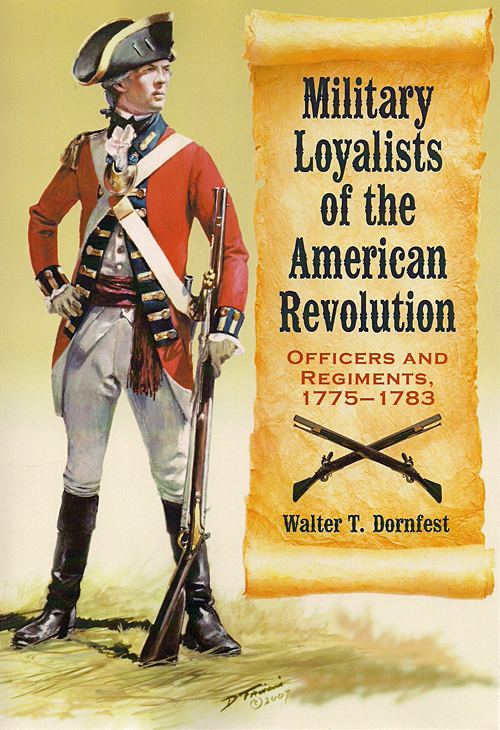 | ||
The Loyalists were American colonists who remained loyal to the British Crown during the American Revolutionary War. At the time they were often called Tories, Royalists, or King's Men; Patriots called them "persons inimical to the liberties of America". They were opposed by the Patriots, those who supported the revolution. Prominent Loyalists repeatedly assured the British government that many thousands of loyalists would spring to arms and fight for the crown. The British government acted in expectation of that, especially in the southern campaigns in 1780-81. In practice, the number of loyalists in military service was far lower than expected. Across the new United States, Patriots watched suspected Loyalists very closely, and would not tolerate any organized Loyalist opposition. Many outspoken or militarily active loyalists were forced to flee, especially to their stronghold of New York City.
Contents
- Background
- Motivations for Loyalism
- Loyalism and military operations
- Numbers of Loyalists
- Slavery and Black Loyalists
- Loyalist Women
- Loyalism in Canada
- Military service
- Emigration from the United States
- Return of some expatriates
- Impact of the departure of Loyalist leaders
- Loyalists in art
- Loyalists in literature
- References
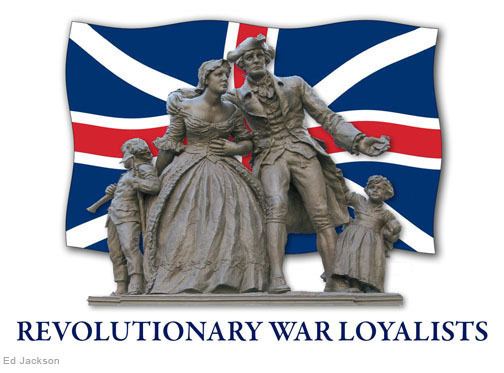
When their cause was defeated, about 15% of the Loyalists (65,000–70,000 people) fled to other parts of the British Empire, to Britain itself, or to what is now Canada (British North America). The southern colonists moved mostly to Florida, which had remained loyal to the Crown, and to British Caribbean possessions, often bringing along their slaves. Northern Loyalists largely migrated to Ontario, Quebec, New Brunswick, and Nova Scotia. They called themselves United Empire Loyalists. Most were compensated with Canadian land or British cash distributed through formal claims procedures. Exiled Loyalists received £3 million or about 37% of their losses from the British government. Loyalists who stayed in the U.S. were generally able to retain their property and become American citizens.
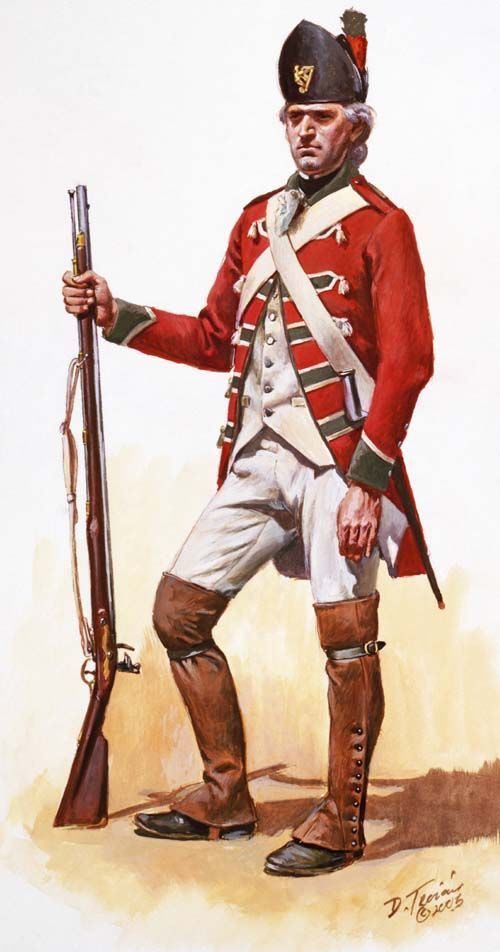
Historians have estimated that between 15 and 20 percent of the 2.0 million whites in the colonies in 1775 were Loyalists, or about 300-400,000 men, women and children (however, this figure does not include Black colonists or Native Indians).

Background
The American Revolution was a civil war based on who would rule in the Thirteen Colonies. Families were often divided as war forced colonists to choose sides in a conflict that remained for many years uncertain. Colonists, especially recent arrivals, often felt themselves to be both American and British, subjects of the King, still owing a loyalty to the mother country. Many, like Maryland lawyer Daniel Dulaney, opposed taxation without representation, but would not break their oath to the King or take up arms against him. In one of his many pamphlets, Dulaney wrote: "There may be a time when redress may not be obtained. Till then, I shall recommend a legal, orderly, and prudent resentment". Most hoped for a peaceful reconciliation, and were forced by the Patriots who took control nearly everywhere in 1775-76 to choose sides.
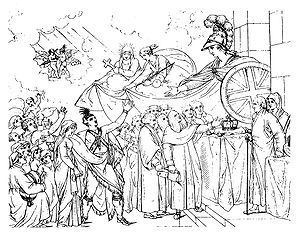
The initial formal gathering that utilized the term "Loyalist" and likely originated the "United Empire Loyalist" (UEL) acronym is believed to have occurred in Boston on October 28, 1775. Suggested by General Thomas Gage, the attendees at this meeting established a society named "The Loyalist Associators Desiring the Unity of the Empire."
Motivations for Loyalism
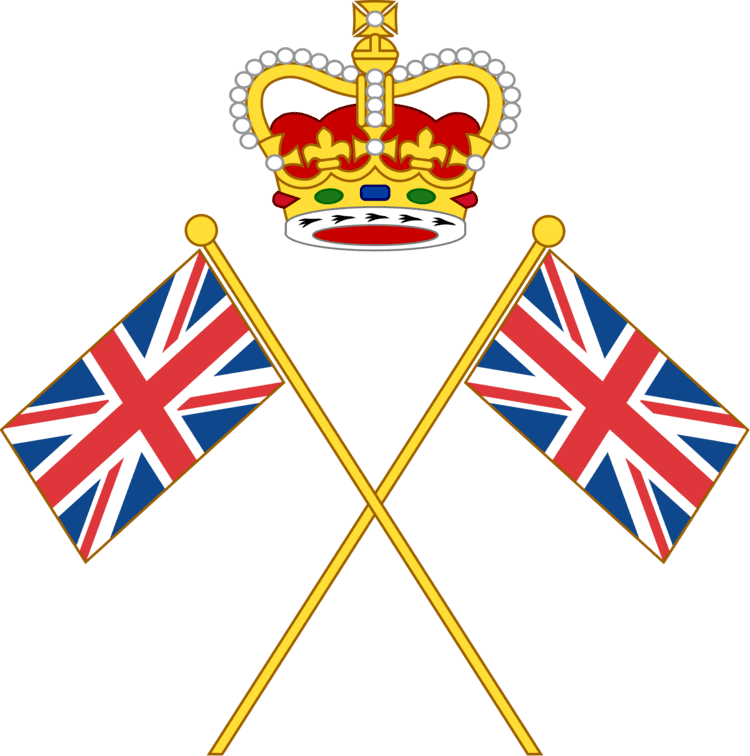
Yale historian Leonard Woods Larabee has identified eight characteristics of the Loyalists that made them essentially conservative and loyal to the king and Britain:
Other motivations of the Loyalists were:
Loyalism and military operations
In the opening months of the Revolutionary War, the Patriots laid siege to Boston, where most of the British forces were stationed. Elsewhere there were few British troops and the Patriots seized control of all levels of government, as well as supplies of arms and gunpowder. These actions were not without resistance. Especially in New York, New Jersey, and parts of North and South Carolina, there was considerable ambivalence about the Patriot cause. Vocal Loyalists, often with the encouragement and assistance of royal governors, recruited people to their side. In the South Carolina backcountry Loyalist recruitment oustripped that of Patriots. A brief siege at Ninety Six in the fall of 1775 was followed by a rapid rise in Patriot recruiting and a Snow Campaign involving thousands of partisan militia resulted in the arrest or flight of most of the backcountry Loyalist leadership. North Carolina backcountry Scots and former Regulators joined forces in early 1776, but were broken as a force at the Battle of Moore's Creek Bridge.
By July 4, 1776 the Patriots had gained control of virtually all territory in the 13 colonies, and expelled all royal officials. No one who openly proclaimed their loyalty to the Crown was allowed to remain, so for the moment, Loyalists fled or kept quiet. Some of those who remained later gave aid to invading British armies or joined uniformed Loyalist regiments.
The British were forced out of Boston by March 17, 1776; they regrouped at Halifax and attacked New York in August, handing a convincing defeat to George Washington's army at Long Island and capturing New York City and its vicinity. The British forces would occupy the area around the mouth of the Hudson River until 1783. British forces would also seize control of other cities, including Philadelphia (1777), Savannah (1778–83) and Charleston (1780–82), as well as various slices of countryside. But 90% of the colonial population lived outside the cities, with the effective result being that the Congress controlled 80–90% of the population. The British removed their governors from colonies where the Patriots were in control, but Loyalist civilian government was re-established in coastal Georgia from 1779 to 1782, despite presence of Patriot forces in the northern part of Georgia. Essentially, the British were only able to maintain power in areas where they had a strong military presence.
Numbers of Loyalists
Historian Robert Calhoon wrote in 2000, concerning the proportion of Loyalists to Patriots in the Thirteen Colonies:
Historians' best estimates put the proportion of adult white male loyalists somewhere between 15 and 20 percent. Approximately half the colonists of European ancestry tried to avoid involvement in the struggle—some of them deliberate pacifists, others recent immigrants, and many more simple apolitical folk. The patriots received active support from perhaps 40 to 45 percent of the white populace, and at most no more than a bare majority.
Before Calhoon's work, estimates of the Loyalist share of the population were somewhat higher, at about one-third, but these estimates are now seen as too high by most scholars. Adams did indeed estimate in another letter of that year that in the American Revolution, the Patriots had to struggle against approximately one-third of the population, while they themselves constituted about two-thirds of it; he did not mention neutrals. In 1968 historian Paul H. Smith estimated there were about 500,000 Loyalists, or 16% of the white population.
Historian Robert Middlekauff summarized scholarly research on the nature of Loyalist support as follows:
The largest number of loyalists were found in the middle colonies: many tenant farmers of New York supported the king, for example, as did many of the Dutch in the colony and in New Jersey. The Germans in Pennsylvania tried to stay out of the Revolution, just as many Quakers did, and when that failed, clung to the familiar connection rather than embrace the new. Highland Scots in the Carolinas, a fair number of Anglican clergy and their parishioners in Connecticut and New York, a few Presbyterians in the southern colonies, and a large number of the Iroquois Indians stayed loyal to the king.
New York City and Long Island were the British military and political base of operations in North America from 1776 to 1783 and had a large concentration of Loyalists, many of whom were refugees from other states.
According to Calhoon, Loyalists tended to be older and wealthier, but there were also many Loyalists of humble means. Many active Church of England members became Loyalists. Some recent arrivals from Britain, especially those from Scotland, had a high Loyalist proportion. Loyalists in the southern colonies were suppressed by the local Patriots, who controlled local and state government. Many people—including former Regulators in North Carolina — refused to join the rebellion, as they had earlier protested against corruption by local authorities who later became Revolutionary leaders. The oppression by the local Whigs during the Regulation led to many of the residents of backcountry North Carolina sitting out the Revolution or siding with the Loyalists.
In areas under Patriot control, Loyalists were subject to confiscation of property, and outspoken supporters of the king were threatened with public humiliation such as tarring and feathering, or physical attack. It is not known how many Loyalist civilians were harassed by the Patriots, but the treatment was a warning to other Loyalists not to take up arms. In September 1775, William Drayton and Loyalist leader Colonel Thomas Fletchall signed a treaty of neutrality in the interior community of Ninety Six, South Carolina. For actively aiding the British army when it occupied Philadelphia, two residents of the city were tried for treason, convicted, and executed by returning Patriot forces.
Slavery and Black Loyalists
As a result of the looming crisis in 1775 the Royal Governor of Virginia, Lord Dunmore, issued a proclamation that promised freedom to servants and slaves who were able to bear arms and join his Loyalist Ethiopian Regiment. Many of the slaves in the South joined the Loyalists with intentions of gaining freedom and escaping the South. About 800 did so; some helped rout the Virginia militia at the Battle of Kemp's Landing and fought in the Battle of Great Bridge on the Elizabeth River, wearing the motto "Liberty to Slaves", but this time they were defeated. The remains of their regiment were then involved in the evacuation of Norfolk, after which they served in the Chesapeake area. Eventually the camp that they had set up there suffered an outbreak of smallpox and other diseases. This took a heavy toll, putting many of them out of action for some time. There was a slave by the name of Boston King who joined the Loyalists and wound up catching smallpox. Boston King and other soldiers who were sick were relocated to a different part of the camp so that they did not contaminate the healthy soldiers. The survivors joined other British units and continued to serve throughout the war. Black colonials were often the first to come forward to volunteer and a total of 12,000 African Americans served with the British from 1775 to 1783. This factor had the effect of forcing the rebels to also offer freedom to those who would serve in the Continental Army; however, such promises were often reneged upon by both sides.
African Americans who gained their freedom by fighting for the British became known as Black loyalists. The British honored the pledge of freedom in New York through the efforts of General Guy Carleton who recorded the names of African Americans who had supported the British in a document called the Book of Negroes which granted freedom to slaves who had escaped and assisted the British. About 4,000 Black Loyalists went to the British colonies of Nova Scotia and New Brunswick, where the British promised them land. They founded communities across the two provinces, many of which still exist today. Over 2,500 settled in Birchtown, Nova Scotia, instantly making it the largest free black community in North America. However, the inferior grants of land they were given and the prejudices of white Loyalists in nearby Shelburne who regularly harassed the settlement in events such as the Shelburne Riots in 1784, made life very difficult for the community. In 1791 Britain's Sierra Leone Company offered to transport dissatisfied black Loyalists to the British colony of Sierra Leone in Africa, with the promise of better land and more equality. About 1,200 left Nova Scotia for Sierra Leone, where they named the capital Freetown. After 1787 they became Sierra Leone's ruling elite. About 400 to 1,000 free blacks who joined the British side in the Revolution went to London and joined the free black community of about 10,000 there.
Loyalist Women
While men were out fighting for the crown, women served at home protecting their land and property. At the end of the war, many loyalist men left America for the shelter of England, leaving their wives and daughters to protect their land The main punishment for Loyalist families was the expropriation of property, but married women were protected under "feme covert", which meant that they had no political identity and their legal rights were absorbed by their husbands. This created an awkward dilemma for the confiscation committees: confiscating the land of such a women would punish her for her husband's actions. In fact, many women were punished in this way. Grace Growden Galloway recorded the experience in her diary. Galloway's property was seized by the Rebels and she spent the rest of her life fighting to regain it. It was returned to her heirs in 1783, after she and her husband had died.
Loyalism in Canada
Rebel agents were active in Quebec (which was then frequently called "Canada", the name of the earlier French province) in the months leading to the outbreak of active hostilities. John Brown, an agent of the Boston Committee of Correspondence, worked with Canadian merchant Thomas Walker and other rebel sympathisers during the winter of 1774–1775 to convince inhabitants to support the actions of the First Continental Congress. However, many of Quebec's inhabitants remained neutral, resisting service to either the British or the Americans.
Although some Canadians took up arms in support of the rebellion, the majority remained loyal to the King. French Canadians had been satisfied by the British government's Quebec Act of 1774, which offered religious and linguistic toleration; in general, they did not sympathize with a rebellion that they saw as being led by Protestants from New England, who were their commercial rivals and hereditary enemies. Most of the English-speaking settlers had arrived following the British conquest of Canada in 1759–1760, and were unlikely to support separation from Britain. The older British colonies, Newfoundland and Nova Scotia (including what is now New Brunswick) also remained loyal and contributed military forces in support of the Crown.
In late 1775 the Continental Army sent a force into Quebec, led by General Richard Montgomery and Colonel Benedict Arnold, with the goal of convincing the residents of Quebec to join the Revolution. Although only a minority of Canadians openly expressed loyalty to King George, about 1,500 militia fought for the King in the Siege of Fort St. Jean. In the region south of Montreal that was occupied by the Continentals, some inhabitants supported the rebellion and raised two regiments to join the Patriot forces.
In Nova Scotia, there were many Yankee settlers originally from New England, and they generally supported the principles of the revolution. This element was declining in relative numbers and influence due to an influx of recent immigration from the British isles, and they remained neutral during the war, and the influx was greatest in Halifax. Britain in any case built up powerful forces at the naval base of Halifax after the failure of Jonathan Eddy to capture Fort Cumberland in 1776. Although the Continentals captured Montreal in November 1775, they were turned back a month later at Quebec City by a combination of the British military under Governor Guy Carleton, the difficult terrain and weather, and an indifferent local response. The Continental forces would be driven from Quebec in 1776, after the breakup of ice on the St. Lawrence River and the arrival of British transports in May and June. There would be no further serious attempt to challenge British control of present-day Canada until the War of 1812.
In 1777, 1,500 Loyalist militia took part in the Saratoga campaign in New York, and surrendered with General Burgoyne after the Battles of Saratoga in October. For the rest of the war Quebec acted as a base for raiding expeditions, conducted primarily by Loyalists and Indians, against frontier communities.
Military service
The Loyalists rarely attempted any political organization. They were often passive unless regular British army units were in the area. The British, however, assumed a highly activist Loyalist community was ready to mobilize and planned much of their strategy around raising Loyalist regiments. The British provincial line, consisting of Americans enlisted on a regular army status, enrolled 19,000 Loyalists (50 units and 312 companies). The maximum strength of the Loyalist provincial line was 9,700 in December 1780. In all about 19,000 at one time or another were soldiers or militia in British forces. Loyalists from South Carolina fought for the British in the Battle of Camden. The British forces at the Battle of Monck's Corner and the Battle of Lenud's Ferry consisted entirely of Loyalists with the exception of the commanding officer (Banastre Tarleton). Both white and black Loyalists fought for the British at the Battle of Kemp's Landing in Virginia.
Emigration from the United States
Historian Maya Jasanoff estimated how many Loyalists departed the U.S. She calculates 60,000 in total, including about 50,000 whites. The majority of them—about 33,000—went to New Brunswick and Nova Scotia, while about 6,600 went to Quebec and 2,000 to Prince Edward Island. About 5,000 white Loyalists went to Florida, bringing along their slaves who numbered about 6,500. About 13,000 went to Britain (including 5,000 free blacks). The 50,000 or-so white departures represented about 10% of the Loyalist element. Loyalists (especially soldiers and former officials) could choose evacuation. Loyalists whose roots were not yet deeply embedded in the United States were more likely to leave; older people who had familial bonds and had acquired friends, property, and a degree of social respectability were more likely to remain in the US. The vast majority of the half-million white Loyalists remained in the U.S. Starting in the mid-1780s a small percentage of those who had left returned to the United States. The exiles amounted to about 2% of the total US population of 3 million at the end of the war in 1783.
After 1783 some former Loyalists (especially Germans from Pennsylvania) emigrated to Canada to take advantage of the British government's offer of free land. Many departed because they faced continuing hostility.
The 33,000 or so who went to Nova Scotia were not well received by the Nova Scotians, who were mostly descendants of New Englanders settled there before the Revolution. "They [the Loyalists]", Colonel Thomas Dundas wrote in 1786, "have experienced every possible injury from the old inhabitants of Nova Scotia, who are even more disaffected towards the British Government than any of the new States ever were. This makes me much doubt their remaining long dependent." In response, the colony of New Brunswick, until 1784 part of Nova Scotia, was created for the 14,000 who had settled in those parts. Of the 46,000 who went to Canada, 10,000 went to the Province of Quebec especially what is now modern-day Ontario.
Realizing the importance of some type of consideration, on November 9, 1789, Lord Dorchester, the governor of Quebec, declared that it was his wish to "put the mark of Honour upon the Families who had adhered to the Unity of the Empire." As a result of Dorchester's statement, the printed militia rolls carried the notation:
Those Loyalists who have adhered to the Unity of the Empire, and joined the Royal Standard before the Treaty of Separation in the year 1783, and all their Children and their Descendants by either sex, are to be distinguished by the following Capitals, affixed to their names: U.E. Alluding to their great principle The Unity of the Empire.
The postnominals "U.E." are rarely seen today, but the influence of the Loyalists on the evolution of Canada remains. Their ties to Britain and their antipathy to the United States provided the strength needed to keep Canada independent and distinct in North America. The Loyalists' basic distrust of republicanism and "mob rule" influenced Canada's gradual path to independence. The new British North American provinces of Upper Canada (the forerunner of Ontario) and New Brunswick were founded as places of refuge for the United Empire Loyalists..
In an interesting historical twist Peter Matthews, a son of Loyalists, participated in the Upper Canada Rebellion which sought relief from oligarchic British colonial government and pursued American-style Republicanism. He was arrested, tried and executed in Toronto, and later became heralded as a patriot to the movement which led to Canadian self governance.
The wealthiest and most prominent Loyalist exiles went to Great Britain to rebuild their careers; many received pensions. Many Southern Loyalists, taking along their slaves, went to the West Indies and the Bahamas, particularly to the Abaco Islands.
Many Loyalists brought their slaves with them to Canada (mostly to areas that later became Ontario and New Brunswick) where slavery was legal. An imperial law in 1790 assured prospective immigrants to Canada that their slaves would remain their property.
Thousands of Iroquois and other Native Americans were expelled from New York and other states and resettled in Canada. The descendants of one such group of Iroquois, led by Joseph Brant (Thayendenegea), settled at Six Nations of the Grand River, the largest First Nations reserve in Canada. (The remainder, under the leadership of Cornplanter (John Abeel) and members of his family, stayed in New York.) A group of African-American Loyalists settled in Nova Scotia but emigrated again for Sierra Leone after facing discrimination there.
Benjamin Thompson (Count Rumford) was a Loyalist who fled to London when the war began. He became a scientist noted for pioneering thermodynamics and for his research on artillery ordnance. He expressed a desire to return to the United States in 1799 and was eagerly sought by the Americans (who needed help in fighting the Quasi-War with France). Rumford eventually decided to stay in London because he was engrossed with establishing the Royal Institution in England.
Many of the Loyalists were forced to abandon substantial amounts of property to America, and restoration of or compensation for this lost property was a major issue during the negotiation of the Jay Treaty in 1794.
Return of some expatriates
The great majority of Loyalists never left the United States; they stayed on and were allowed to be citizens of the new country. Some became nationally prominent leaders, including Samuel Seabury and Tench Coxe. Alexander Hamilton enlisted the help of the ex-Loyalists in New York in 1782–85 to forge an alliance with moderate Whigs to wrest the state from the power of the Clinton faction. Several thousand of those who had left for Florida returned to Georgia. There was a small, but significant trickle of returnees who found life in Nova Scotia too difficult. Some Massachusetts Tories settled in the Maine District. Nevertheless, the vast majority who did leave never returned.
Captain Benjamin Hallowell, who as Mandamus Councilor in Massachusetts served as the direct representative of the Crown, was considered by the insurgents as one of the most hated men in the Colony, but as a token of compensation when he returned from England in 1796, his son was allowed to regain the family house.
Impact of the departure of Loyalist leaders
The departure of so many royal officials, rich merchants and landed gentry destroyed the hierarchical networks that had dominated most of the colonies. In New York, the departure of key members of the DeLancy, DePester Walton and Cruger families undercut the interlocking families that largely owned and controlled the Hudson Valley. Likewise in Pennsylvania, the departure of powerful families—Penn, Allen, Chew, Shippen—destroyed the cohesion of the old upper class there. Massachusetts passed an act banishing forty-six Boston merchants in 1778, including members of some of Boston's wealthiest families. The departure of families such as the Ervings, Winslows, Clarks, and Lloyds deprived Massachusetts of men who had hitherto been leaders of networks of family and clients. The bases of the men who replaced them were much different. One rich Patriot in Boston noted in 1779 that "fellows who would have cleaned my shoes five years ago, have amassed fortunes and are riding in chariots." New men became rich merchants but they shared a spirit of republican equality that replaced the former elitism.
